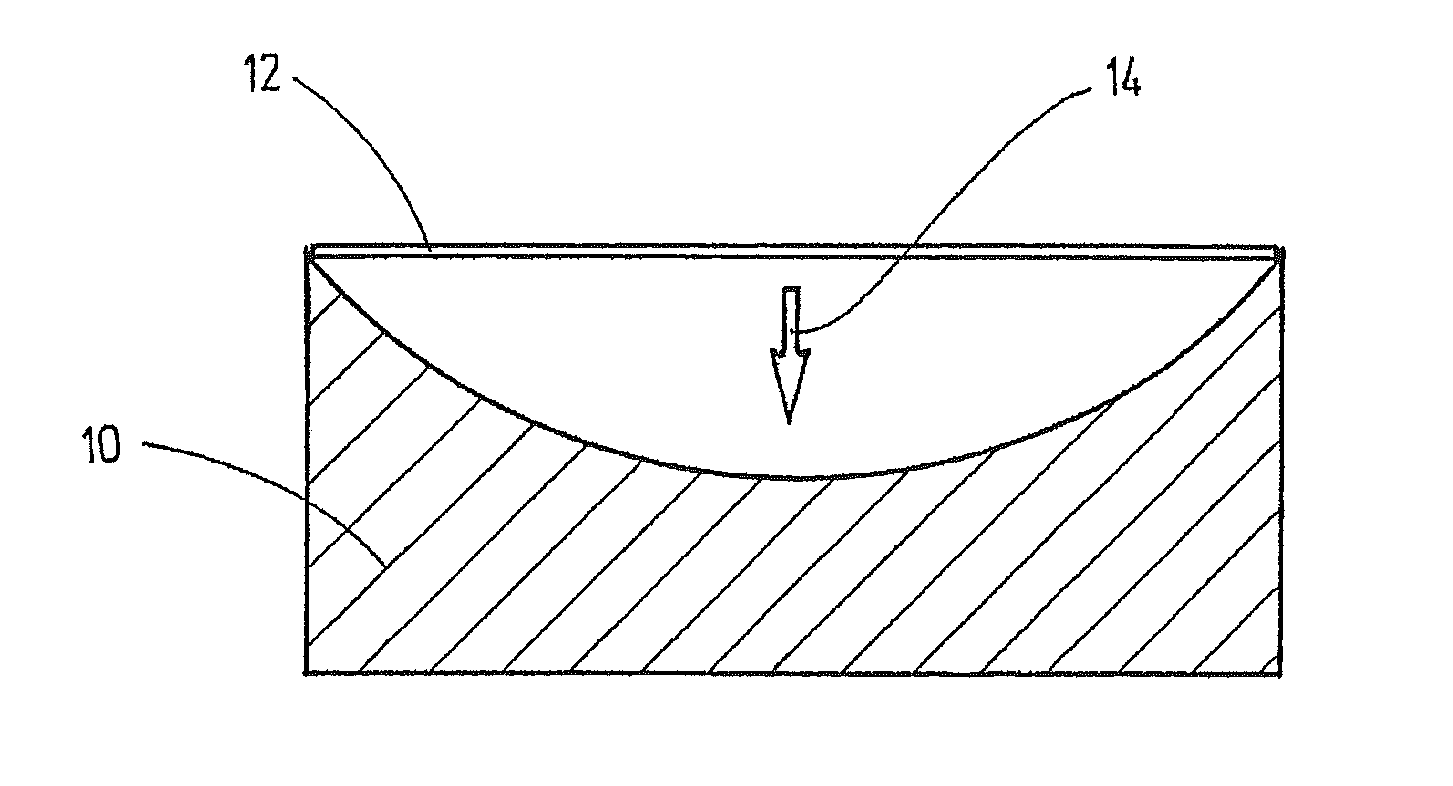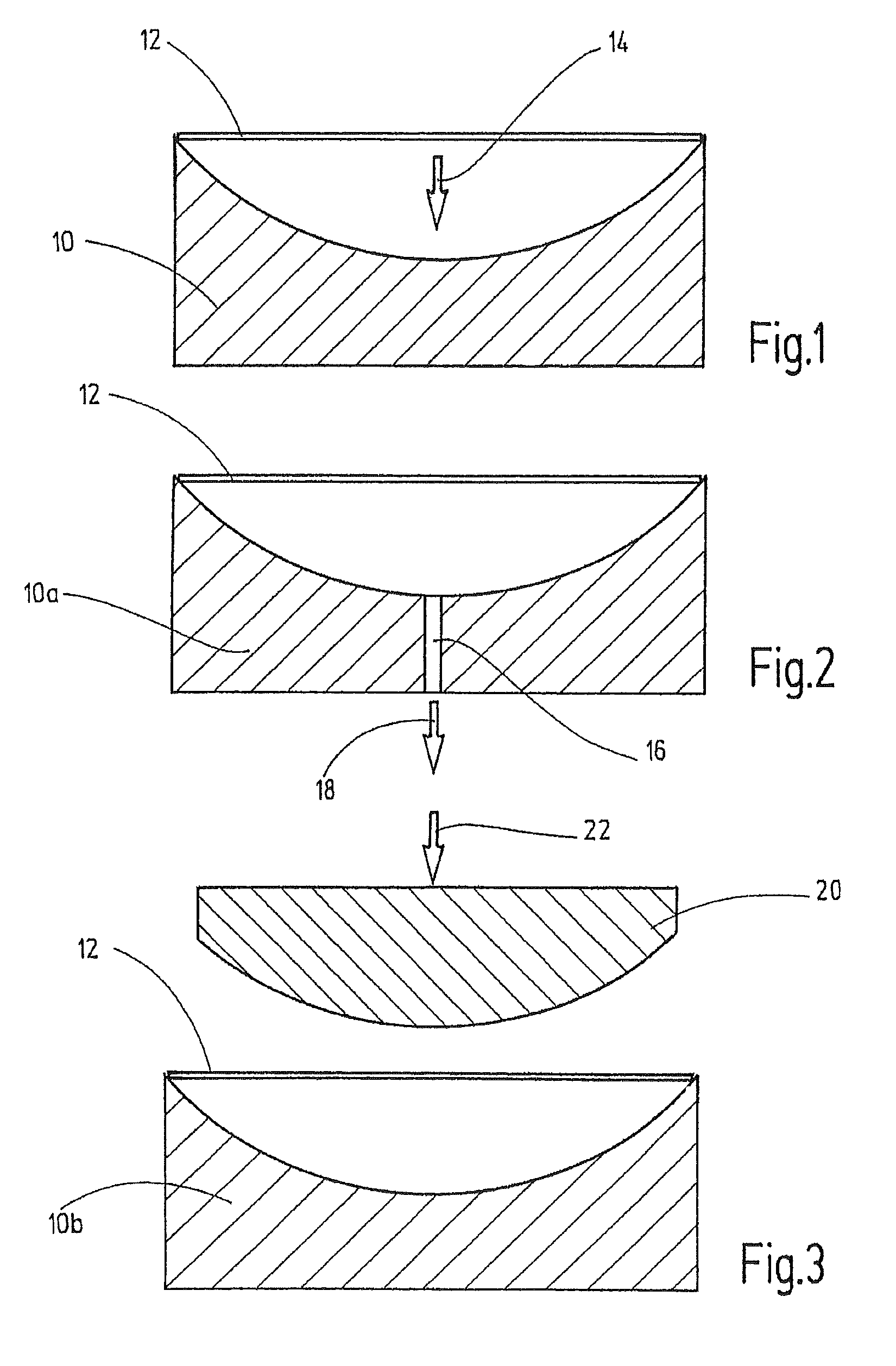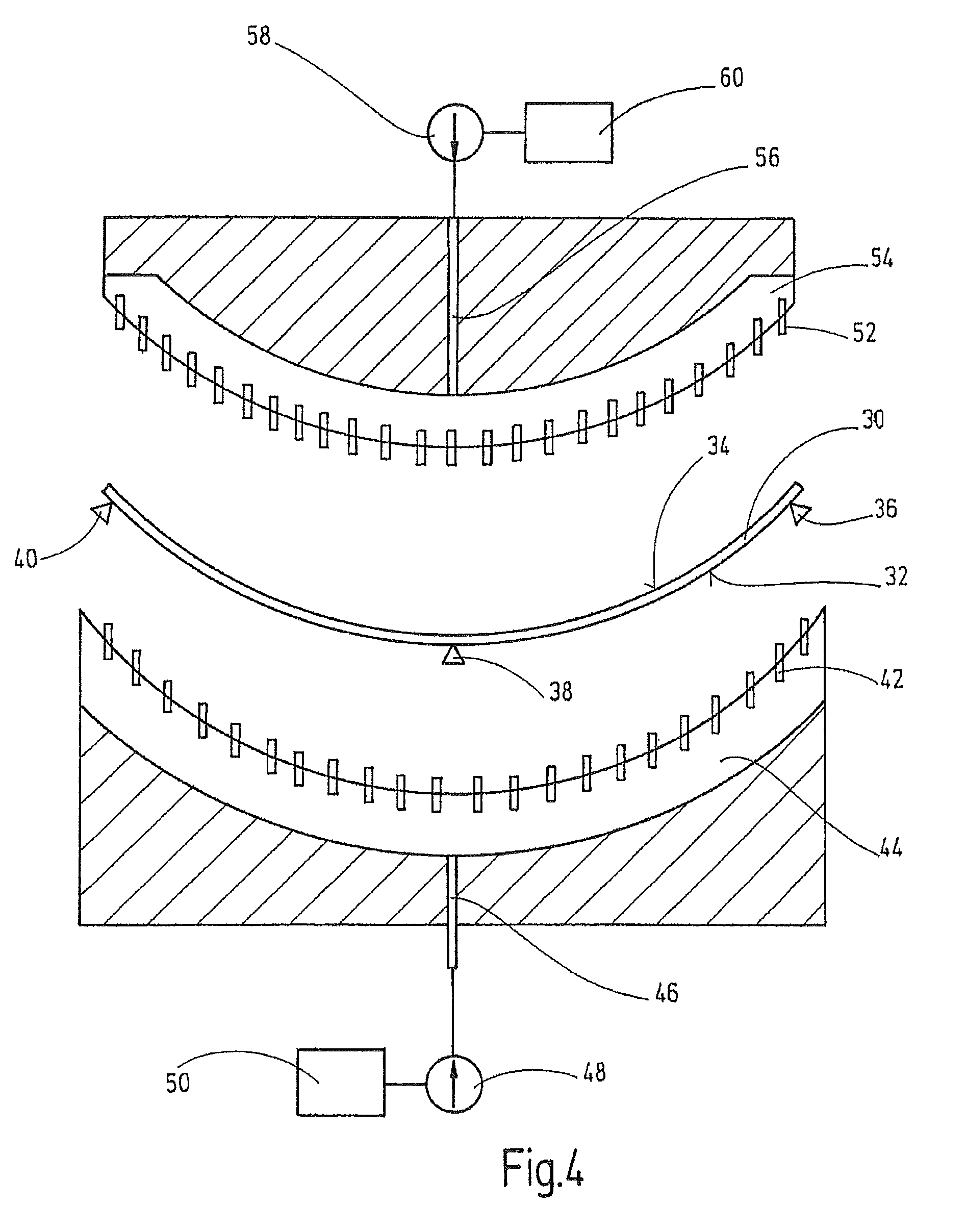Method for bending and thermally prestressing radiation shielding glass
a radiation shielding glass and thermal prestressing technology, applied in glass tempering apparatus, glass making apparatus, glass shaping apparatus, etc., can solve the problems of reduced mechanical and chemical stability or strength of the surface, 2- or 3-dimensional deformation of such glasses, and inability to thermal prestress such glasses by known bending methods, etc., to achieve high quality
- Summary
- Abstract
- Description
- Claims
- Application Information
AI Technical Summary
Benefits of technology
Problems solved by technology
Method used
Image
Examples
example 1
[0071]The mold 10 is first treated with a release agent, for example with graphite powder, and then preheated in a furnace, initially to 350 to 400° C. Thereafter, a cold glass plate was placed on top. Further heating in the furnace was then effected to 400° C. over a period of 60 minutes and finally heating to about 480° C. over a period of 30 minutes. Gravitational molding, as shown in FIG. 1, took place during this procedure. This was followed by cooling in the mold 10 with the following temperature program: cooling to 400° C. over 60 minutes, further cooling to 300° C. over 70 minutes, further cooling to 200° C. over 60 minutes, further cooling to 150° C. over 20 minutes, finally cooling to 70° C. over 30 minutes. The molded glass body was then removed.
example 2
[0072]The same data as in Example 1 were used. However, as shown schematically in FIG. 2, the vacuum was additionally employed as an aid. The mold 10a was subjected to a reduced pressure of about 70 kPa.
example 3
[0073]As in Examples 1 and 2, a glass plate measuring 500×800 mm×thickness of 6 mm comprising the radiation shielding glass RD 50® was used. The mold 10b was produced in the same manner as described above and pretreated by applying a release agent (graphite powder). A double pressing process according to FIG. 3 was then used.
[0074]For this purpose, the mold was first preheated in the furnace to about 350 to 400° C., the cold glass plate was placed on top and brief heating was then effected again in the furnace to about 400 to 450° C. Thereafter, the mold 10b with the glass plate 12 placed on top was transported out of the furnace and a male mold 20 consisting of an aluminum alloy and covered with a woven glass filament fabric was gradually moved downwards up to a maximum pressure of about 6 bars by a pneumatic cylinder in order to press the glass plate 12 against the inner surface of the mold 10b. The pressing process lasted for about 4 to 5 seconds. The male mold was then immediate...
PUM
| Property | Measurement | Unit |
|---|---|---|
| temperature | aaaaa | aaaaa |
| temperature | aaaaa | aaaaa |
| temperature | aaaaa | aaaaa |
Abstract
Description
Claims
Application Information
 Login to View More
Login to View More - R&D
- Intellectual Property
- Life Sciences
- Materials
- Tech Scout
- Unparalleled Data Quality
- Higher Quality Content
- 60% Fewer Hallucinations
Browse by: Latest US Patents, China's latest patents, Technical Efficacy Thesaurus, Application Domain, Technology Topic, Popular Technical Reports.
© 2025 PatSnap. All rights reserved.Legal|Privacy policy|Modern Slavery Act Transparency Statement|Sitemap|About US| Contact US: help@patsnap.com



